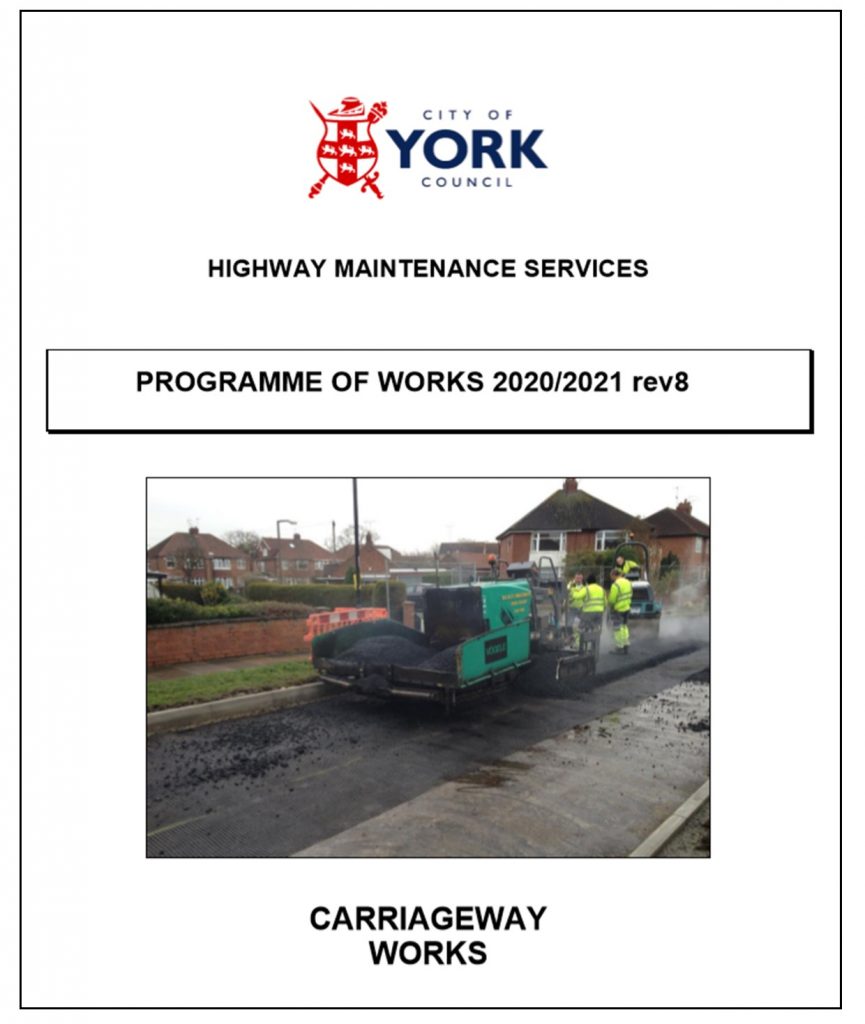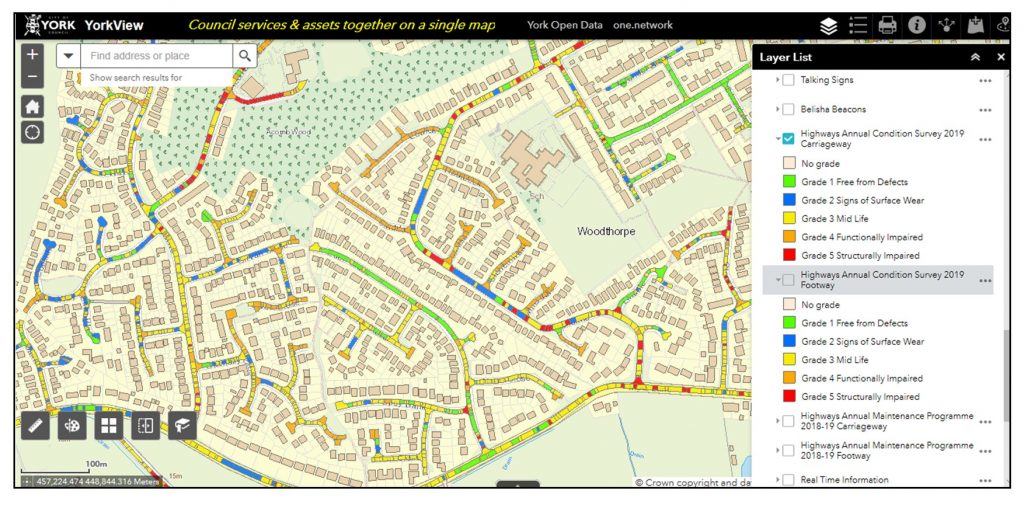City of York Council has published its programme of highways and footpath maintenance work for the 2020/21 financial year https://democracy.york.gov.uk/ieDecisionDetails.aspx?Id=5802&LLL=0

In Dringhouses & Woodthorpe ward, works are planned on the following roads:
Resurfacing
- Tadcaster Road
- Hillcrest Gardens
‘Large patching’
- St Helens Road (section near the Tadcaster Road junction, already completed)
‘Micro patching’
- Wains Road
- Lowick
- Troutbeck
- Overdale Close
- Glenridding
- Windermere
- Bramble Dene
- Dringfield Close
- Woodthorpe Primary School entrance
The Tadcaster Road resurfacing scheme is carried forward from 2019/20, when it was allocated £633,000. Local councillors have queried why, in the 2020/21 published programme of works, the scheme is listed as having a budget of £560,000 and the extent of the scheme seems to have shrunk from its original scope in the 2019/20 programme (The Horseshoe to St Georges Place) to Ainsty Grove to St Georges Place.
We have received clarification from officers that the total budget available for the Tadcaster Road scheme in 2020/21 remains at £633,000 and the extent of the works will be as per the 2019/20 programme.
No footpath resurfacing works are planned for Dringhouses & Woodthorpe ward, other than those to be funded from the ward capital budget – these are a section of the Little Hob Moor cycle path and the path across Woodthorpe Green linking Summerfield Road and Glenridding.
How does the council decide which roads and paths get resurfaced?
In order to produce the programme of highway works for each year, council officers draw information from a number of sources:
- Inspectors undertake an annual visual proactive condition survey of all roads and footways, this in addition to their monthly inspections for reactive maintenance
- Digital camera capture condition survey of all roads and footways (GAIST)
- United Kingdom Pavement Management System (UKPMS) visual and machine surveys (SCANNER) which records skid resistance.
All of this inspection data is collated by GAIST to produce five condition categories for sections of public highway, being grade 1 (very good), grade 2 (good), grade 3 (fair), grade 4 (poor) and grade 5 (very poor).

Each road and footway is assessed and given a ranking (score) based on a range of criteria, all metrics of the network were collated and a treatment solution determined.
In order to develop a set of schemes in accordance with the best practice promoted by the Department for Transport the council additionally considers criteria such as accident data, traffic levels, footfall, bus frequency, proximity to schools, shopping centres etc. This produces a list of schemes that can be delivered within the budget.
Councillors set the budget, but officers devise the list of schemes (other than ward-funded schemes).
